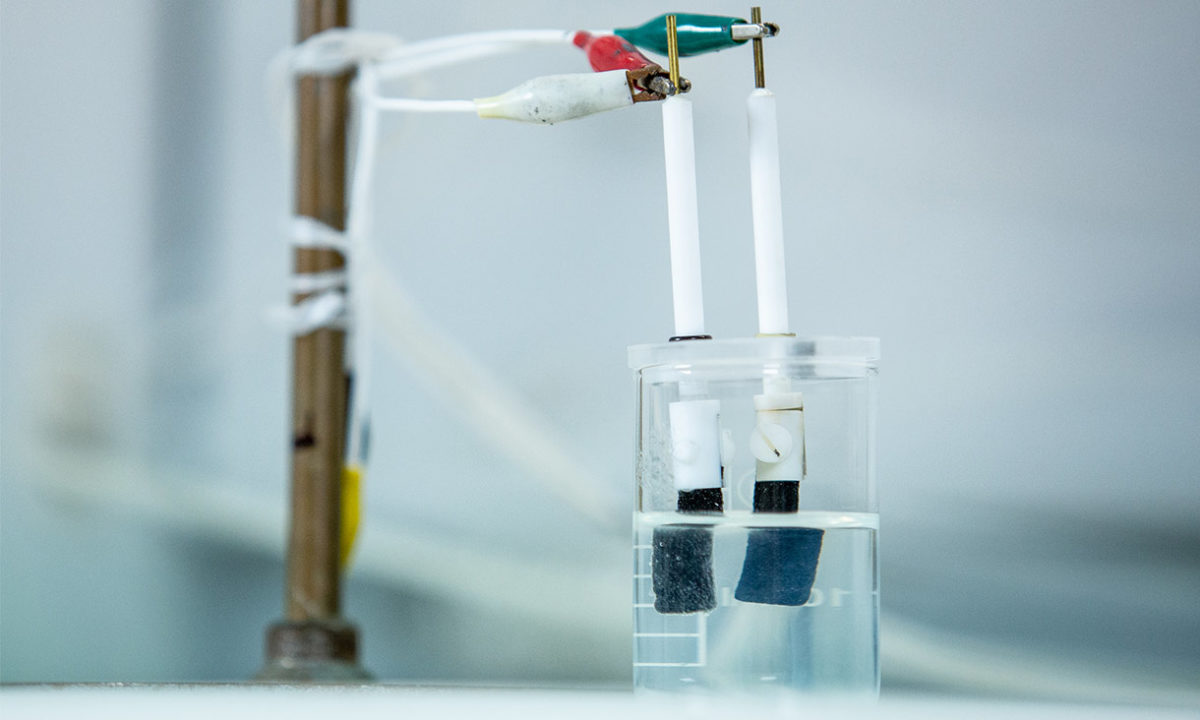Researchers from RMIT University in Melbourne, Australia, have developed a new way to split seawater into hydrogen and oxygen, without the need for desalination and its associated costs, energy consumption, and toxic byproducts. They incorporated a catalyst composed of nitrogen-doped porous sheets developed to work specifically with seawater.
The new approach, devised by a team in the multidisciplinary Materials for Clean Energy and Environment (MC2E) research group at RMIT, uses a catalyst composed of nitrogen-doped porous nickel molybdenum phosphide sheets. The method, detailed in a lab-scale study that was recently published in Small, relies on the presence of large pores in the sheets to increase electrical conductivity while the presence of metal-nitrogen bonds and surface polyanions increases the stability and improves anti-corrosive properties against chlorine chemistry.
The researchers said the catalyst sheets displayed “remarkable performance,” catalyzing full water splitting at 1.52 and 1.55 V to achieve 10 mA cm−2 in 1 m KOH and seawater, respectively.
“Hence, structural and compositional control can make catalysts effective in realising low-cost hydrogen directly from seawater,” the team concluded.
Lead researcher Nasir Mahmood said the new method overcomes some of the hurdles associated with seawater’s salt-rich nature.
“The biggest hurdle with using seawater is the chlorine, which can be produced as a by-product. If we were to meet the world’s hydrogen needs without solving this issue first, we’d produce 240 million tons per year of chlorine each year – which is three to four times what the world needs in chlorine,” Mahmood said. “There’s no point replacing hydrogen made by fossil fuels with hydrogen production that could be damaging our environment in a different way. Our process not only omits no carbon dioxide, but also has no chlorine production.”
While other experimental catalysts have been developed for seawater splitting, PhD candidate Suraj Loomba said the RMIT research team had focused on producing highly efficient, stable catalysts that can be manufactured cost-effectively.
“Our approach focused on changing the internal chemistry of the catalysts through a simple method, which makes them relatively easy to produce at large-scale so they can be readily synthesised at industrial scales,” he said.
pv magazine print edition
Mahmood said the technology had promise to significantly bring down the cost of electrolyzers – enough to meet the Australian government’s goal for green hydrogen production of $2 per kilogram, to make it competitive with fossil fuel-sourced hydrogen.
“Our method to produce hydrogen straight from seawater is simple, scaleable and far more cost-effective than any green hydrogen approach currently in the market,” he said. “With further development, we hope this could advance the establishment of a thriving green hydrogen industry in Australia.”
A provisional patent application has been filed for the new method and the researchers said they are working with industry partners to develop the technology. The next stage is the development of a prototype electrolyzer that combines a series of catalysts to produce large quantities of hydrogen.
This content is protected by copyright and may not be reused. If you want to cooperate with us and would like to reuse some of our content, please contact: editors@pv-magazine.com.




By submitting this form you agree to pv magazine using your data for the purposes of publishing your comment.
Your personal data will only be disclosed or otherwise transmitted to third parties for the purposes of spam filtering or if this is necessary for technical maintenance of the website. Any other transfer to third parties will not take place unless this is justified on the basis of applicable data protection regulations or if pv magazine is legally obliged to do so.
You may revoke this consent at any time with effect for the future, in which case your personal data will be deleted immediately. Otherwise, your data will be deleted if pv magazine has processed your request or the purpose of data storage is fulfilled.
Further information on data privacy can be found in our Data Protection Policy.